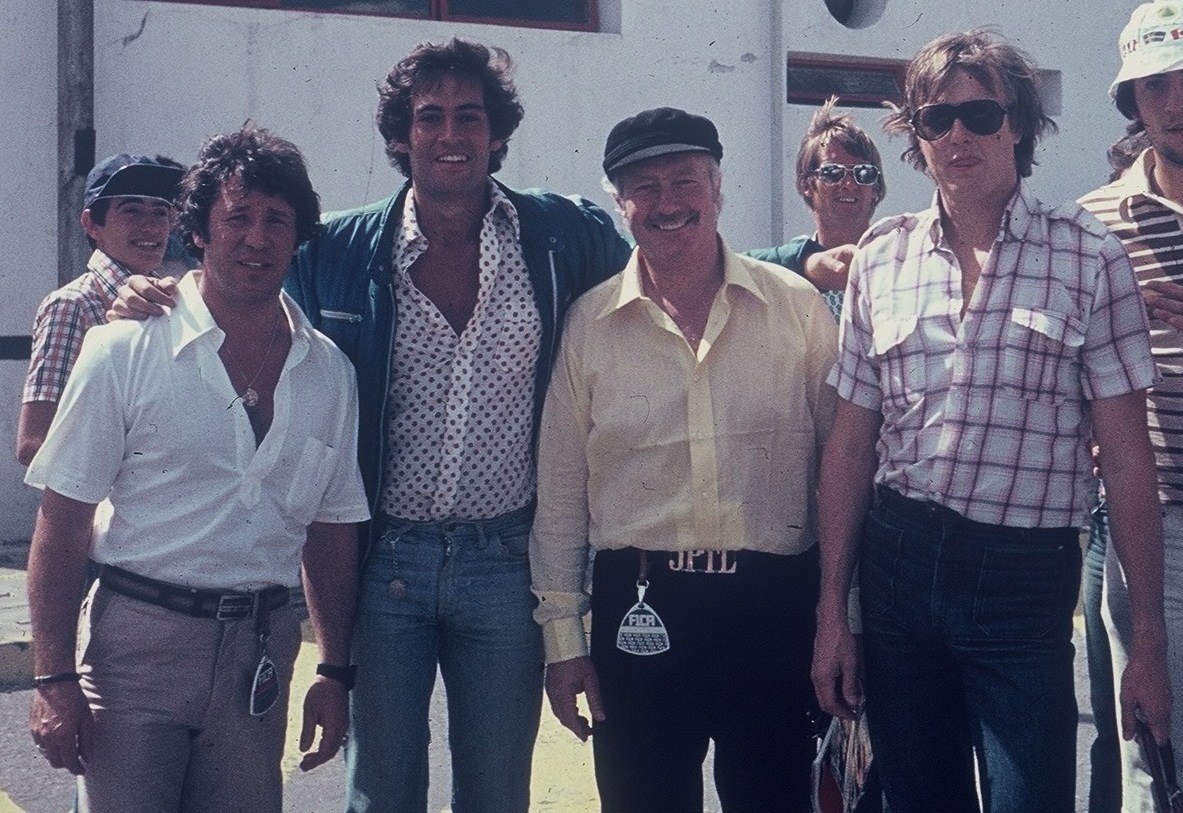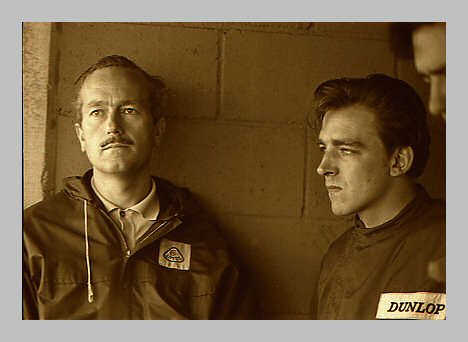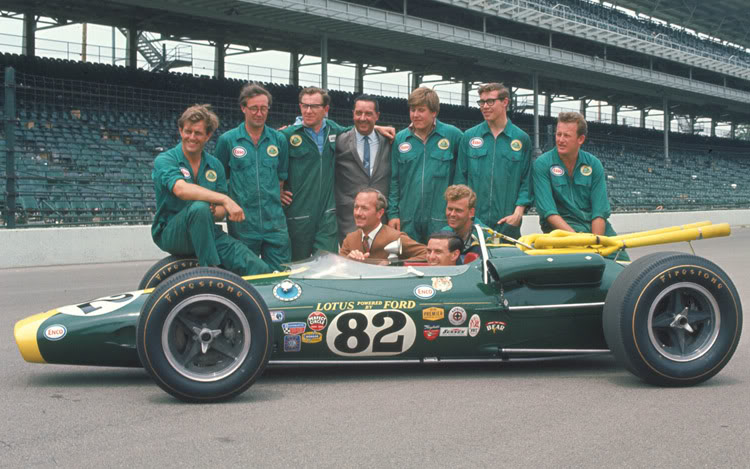"Ok, we know. There is a twisted, byzantine history to the whole Lotus story – and when you talk about Lotus Racing and Team Lotus etc, there's even more layers of weirdness to negotiate. The quirky, idiosyncratic company history of Lotus "

Colin Chapman: Mr Lotus
Words by Luke Friend
The legend of Colin Chapman today is saturated in myth, claim and counter claim. The portrait of a suave cad who founded Lotus with a £25 loan and grew the marque to greatness through a combination of genius, hard work and charisma has been somewhat dented in recent times. But his mark on British motor racing remains indelible. And he reminds us of Alan Whicker with a spanner.
Through Lotus he gave life to numerous design innovations that changed the face of motor racing, piling up wins on the racing circuits, demonstrating that his fertile mind and futuristic ideas had a defined purpose.

At work with shirt Eddie Jordan would be proud of, in 1972
Chapman was many things – engineer, entrepreneur, revolutionary – but above all he was a competitor. Anybody wishing to succeed in any field looks for an advantage and Chapman found his in the technological advancements that he was able to pioneer with his small team of dedicated engineers.
In a 1975 notebook he wrote, ‘A racing car has only ONE objective: to WIN motor races. If it does not do this it is nothing but a waste of time, money, and effort.’ As an ethos, it is both utterly ruthless and brutally honest. It is also what continually drove him to seek improvement, to tinker, experiment and challenge the tried and the tested. It is what led Lotus to seven Formula 1 Constructors titles, six Drivers Championships and a string of victories in the Indianapolis 500 between 1962 and 1978.

With Mario Andretti, random punter, Ronnie Peterson & interesting belt.
As a keen pilot (Chapman was in the RAF before he joined the British Aluminium Company) he paid particular attention to aeronautical engineering techniques and sort application to the racing car. A preoccupation with aerodynamics and with saving weight would become the building blocks for many of his most important and influential contributions.
Chapman’s obsession with the lightness was grounded in a simple principle. “Adding power makes you faster on the straights,” he said. “Subtracting weight makes you faster everywhere.” By sacrificing power for improved handling he created cars that could respond to the brilliance of drivers like Jim Clark and Graham Hill – an astute tactic in a sport where every nanosecond counts.

With a very callow Ron Dennis (right)
His list of significant contributions is a long. He pioneered struts as a rear suspension device; today universally known as ‘Chapman struts’. He introduced the monocoque chassis into racing having previously used the technology in the Lotus Elite; the idea sketched on a napkin during a lunch date. In 1962 the Lotus 25 became the first car on the F1 grid to feature a monocoque chassis and a year later the feat was duplicated at the Brickyard in the shape of the Lotus 29. Jim Clark finished 2nd in that running of the Indianapolis 500 and the tube-frame chassis was sectioned to the history books.
‘Ground-effect’ was another Chapman first, as he sort ways to create downforce by harnessing the airflow under the chassis to improve traction and handling. The addition of a Venturi-like channel in the sidepods and sideskirts to trap the airflow resulted in the car being sucked down onto the track, more so as the car increased its speed. Even with the banning of skirts, it is a principle that is applied to all race cars today in varying degrees.

With Trevor Taylor and focussed expression
The creation of downforce led to another Chapman innovation, the dual-chassis, designed to improve driver comfort and subsequently performance. However, his Type 88 was never allowed to race, banned by FISA, another run-in with the authorities that wanted to rein in a man and a mind that didn’t appreciate boundaries of any kind.
Chapman died in 1982 but his active suspension debuted in 1987 in the shape of the Lotus 99T. A fitting tribute to both a true iconoclast and to the importance of his ideas.
Ultimately Chapman created a brand in his own image – with all the quirks and inconsistencies that innovation and creativity produces. If Lotus have managed to harness a quantum of that original spark – then their cars will always have a cult following…
CLICK TO ENLARGE











I hesitate to be a voice of decent amongst people more knowledgable than I, but he was instrumental in a fraud that cost the taxpayer (i.e. us) out of 18 million dollars, nearly a million of which ended up in his own pocket. Fraud is not a victimless crime, as well he knew. Three years is about normal for this, though I do accept that the bigger villans got away with it. The judge said at Bushell’s trial that had he survived Chapman (who pocketed over 8 million dollars) would have got 10 years
We can forgive and forget the Delorian debacle. Colin Chapman was one of the engineering greats. No one deserves to be remembered badly when they were responsible for cars like the Elite, Elan and the timeless Lotus/ Caterham Super 7. We are all a mixture of strength and weakness when it comes down to it.